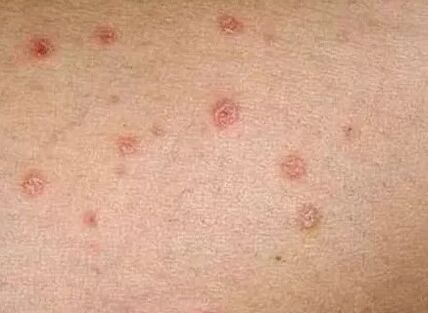Despite the unknown etiology of psoriasis and the factors that provoke it, the stages of its development are well studied.The classification of psoriasis at the stage facilitates the evaluation of the course of the disease, helps to identify the sensitivity to a particular treatment method and to determine the tactics of patients.

The stages of psoriasis are classified depending on the nature of the exacerbation (or the activity of the inflammation process) and the severity.
Psoriasis stages depending on exacerbation
Psoriasis is a disease that has 3 stages:
- progressive;
- stationary;
- Retrogressive;
- remission.
Symptoms of the progressive stage
This stage is characterized by obvious signs of exacerbation.Multiple rashes appear on the skin, with the shape of red nodes (papules, tubercles) with an oval or rounded shape.They merge and form outbreaks occupying a large area, their surface actively peels off, the patient at the same time experiences intense itching of the skin and sometimes a burning sensation.Itching can be exhausting and disturb the patient, not only during the ordinary life, but even in the dream, itching can be enhanced by contact with clothing.After the flakes lags, the surface can get wet and become a nutrient environment for the spread of bacteria.
The main manifestations of the progressive stage are:
- The appearance of papules on the extensor surfaces of the limbs and on the body;
- the fusion of papules into conglomerates ("plaques"), having a whitish color;
- Peeling on the surface of the conglomerates;
- There are no scales in the edges of the plaques, but there is a hyperemic edge;
- The ends of the plaques are compacted;
- The presence of a kebner phenomenon: when mechanical damage (cutting, scratching) appears on uninhabited skin, a new psoriatic plaque is formed in its place.
The more intensity during the progressive stage the redness of the skin, the more active the inflammation process is.The most dangerous consequence of psoriasis is psoriatic arthritis, while severe joint pain occurs, resulting in the joints deform.

Symptoms of a stationary stage
With the onset of the stationary stage, a gradual diminishing of the exacerbation process occurs.At the same time, the papules become pale, they turn from red to pink, new rashes during this period do not appear.The surface of the nodes has the shape of "plaques", it is thick, covered with a crust, which is represented by numerous dried skin flakes.The nature of the healing of the papules begins from the center to the periphery.The presence of a stationary stage of psoriasis confirms the effectiveness of treatment.
The main manifestations of this stage are:
- lack of rashes of new papules;
- Existing plaques stop their growth;
- The surface of the plaques is covered with flakes;
- The red edge disappears around the scaly plaques;
- Kebner's phenomenon disappears.
Symptoms at the regression stage
At the regression stage, the process is involution.The "plaques" are allowed to form areas of skin depigmentation.The itching of the skin gradually disappears, the signs of peeling decrease.
Signs of Psoriasis Regression:
- Around the plaques there is an edge of voron (dense folds located around psoriatic plaques);
- reduction and gradual disappearance of peeling;
- Depigmentation areas (white or dark) are formed at the site of the plates.
At the regression stage, the plaques completely disappear, the remains of plaques are possible in the area: knees, elbows, abdomen, ass.
Remission
Remission is the stage of obvious recovery.During remission, psoriasis is able to sleep but does not disappear from the body.Psoriasis remission continues until the next exacerbation (progressive stage).

It should be noted that during the exacerbation of psoriasis, the general condition of a person does not change, he goes to work, he is engaged in familiar issues of the household.Psoriasis only carries an aesthetic and cosmetic defect of a person: the skin of the skin is scratched a lot, one cannot wear open clothes, if there is an exacerbation in the summer, one cannot visit the pool, go to massage, cosmetic procedures, etc.
Psoriasis stages depending on the area of the lesion
The severity of psoriasis also depends on the area of skin lesions.So, at a slight stage, only 3%of the skin surface is affected by an average of 3 to 10%and heavy - more than 10%.Psoriasis, which causes damage to the joints, belongs to a severe degree, in which case does not take into account the area of skin lesions.You can measure the area of damage yourself.For this purpose, the rule of the open palm is used (the area of the skin corresponding to the area of the human palm is 1% of the entire surface of the body).
PASI Index
The general system for assessing the severity of psoriasis is evaluated by the PASI index, which involves an assessment of spread and severity, as well as the severity of the disease.This indicator is evaluated from 0 to 72. At the same time, a mild psoriasis has an indicator of less than 10, the average - from 10 to 20, the heavy - more than 20. Using the PASI index, the clinical effectiveness of treatment is also calculated.
In addition to different stages, psoriasis can have different types: seborrheic, exudative, plantar, integral, old, rupee, stopped, psoriasis of the nails and mucous membranes.It is impossible to completely cure psoriasis, but you can achieve long remission.It is this purpose that is pursued by modern methods of treatment.























